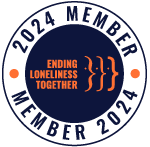Blood pressure is a measure of the pressure exerted on your blood vessels (arteries) as your heart beats. Blood pressure is important for circulating oxygen and nutrient rich blood around the body, it allows blood to flow against gravity to reach the brain and is usually measured on the left arm.
There are two numbers included in a blood pressure measurement (e.g. 120/80mmHg). The first number is called systolic blood pressure, this is the pressure exerted on the arteries as the heart contracts. The second number is called diastolic blood pressure, this is the pressure exerted on the arteries when the heart relaxes.
Blood pressure goes up and down across the day and will rise during periods of stress, anxiety, while talking, walking and performing an exercise session. When blood pressure continues to remain high for a prolonged period of time and during times of rest it can cause damage to blood vessels.
High blood pressure (hypertension) is a risk factor for heart disease, kidney disease, heart failure, heart attacks, stroke and vision loss. People with hypertension often do not experience any symptoms therefore it is important to have your blood pressure checked regularly by your GP. In Australia, hypertension is classified as a blood pressure >140/>90mmHg1. Optimal blood pressure is considered to be <120/<80mmHg1. Depending on your situation your GP or specialist may set a slightly different blood pressure target that is healthy for you.
If exercise increases blood pressure, how can it help?
Blood pressure rises during exercise. This is normal and necessary to increase the amount of oxygen rich blood that is circulated to fuel the working muscles. Regular exercise forms part of a healthy lifestyle and plays a key role in the prevention and management of hypertension. In fact, exercise is first-line treatment for hypertension1,2.
Exercise improves the strength and function of the heart muscle allowing it to pump more blood with less effort. This reduces the maximum pressure exerted on blood vessels at rest and during exercise while still circulating the oxygen and nutrients our bodies need. Exercise also reduces inflammation and cholesterol levels which is beneficial for the health and function of blood vessels2.
So, what type and how much exercise is best for those diagnosed with hypertension?
Aerobic exercise such as walking, swimming, jogging or cycling decreases blood pressure in people with and without hypertension and is a great type of exercise to get started with3,4. For people with hypertension, exercise can reduce blood pressure by around 8mmHg4. Exercise is prescribed using the FITT principle (Frequency, Intensity, Time and Type). The current exercise recommendations for people with hypertension are presented in the table below and include aerobic and resistance (strength) training3.
| Type | Intensity | Frequency | Time |
| Aerobic exercise
(e.g. Walking, cycling, swimming) |
Moderate (RPE 11-13), or | 5 days/week | 30mins |
| Vigorous (RPE 14-16), or | 3 days/week | 20mins | |
| High intensity interval training
(85–95% HRpeak separated by active recovery at 50–70% HRpeak) |
3 days/week | 25mins + warm up and cool down | |
| Resistance training
(e.g. using machines, dumbbells, body weight or therabands) |
8-10 exercises resulting in substantial fatigue. | 2 days/week | 1 set (multiple sets if time allows)
8-12 repetitions |
RPE = Rating of Perceived Exertion on a 6-20 point scale.
Tips from an Exercise Physiologist to exercise safely with hypertension:
- Extend your warmup and cool down to 10mins.
A longer warm up gently prepares your body for the more strenuous exercises in your program by slowly increasing your heart rate and blood pressure and directing blood flow to the working muscles. An extended cool down is useful to avoid arrhythmias (irregular heart rhythm) and fainting due to low blood pressure that can occur if exercise is suddenly stopped.
- Breathe with each movement.
As a rule of thumb breathe out during the hard phase of the movement (when you are trying to move the weight, band or machine) and breathe in as your return to the starting position. Holding your breath can cause a spike in blood pressure that puts unnecessary pressure on blood vessels, particularly those of the heart, kidneys and eyes.
- Maintain hydration before, during and after exercise.
Hydration is important for regulating blood volume and blood viscosity. Dehydration can increase blood pressure and put additional stress on the heart and blood vessels.
What else can you do to look after your heart health:
- Book a heart health check with you GP. This includes a blood pressure check and discussion about your lifestyle.
- Maintain a healthy weight through diet and exercise.
- Sit less and move more. Find something you like doing that moves your body and do it regularly.
Author: Dr Shari O’Brien, exercise physiologist.

References
- National Heart Foundation of Australia. Guideline for the diagnosis and management of hypertension in adults – 2016. Melbourne: National Heart Foundation of Australia, 2016.
- Barone Gibbs B, Hivert MF, Jerome GJ, Kraus WE, Rosenkranz SK, Schorr EN, Spartano NL, Lobelo F; American Heart Association Council on Lifestyle and Cardiometabolic Health; Council on Cardiovascular and Stroke Nursing; and Council on Clinical Cardiology. Physical Activity as a Critical Component of First-Line Treatment for Elevated Blood Pressure or Cholesterol: Who, What, and How?: A Scientific Statement From the American Heart Association. Hypertension. 2021 Aug;78(2):e26-e37. doi: 10.1161/HYP.0000000000000196. Epub 2021 Jun 2. PMID: 34074137.
- Sharman, J.E., Smart, N.A., Coombes, J.S., Stowasser, M. Exercise and sport science australia position stand update on exercise and hypertension. J Hum Hypertens 33, 837–843 (2019). https://doi.org/10.1038/s41371-019-0266-z
- Cornelissen VA, Smart NA. Exercise training for blood pressure: a systematic review and meta-analysis. J Am Heart Assoc. 2013 Feb 1;2(1):e004473. doi: 10.1161/JAHA.112.004473. PMID: 23525435; PMCID: PMC3603230.


